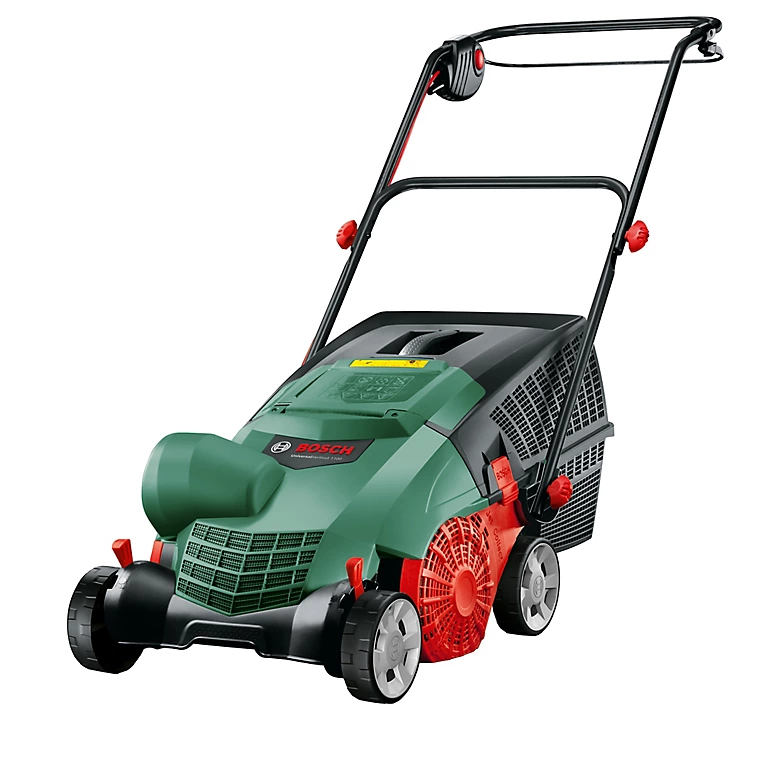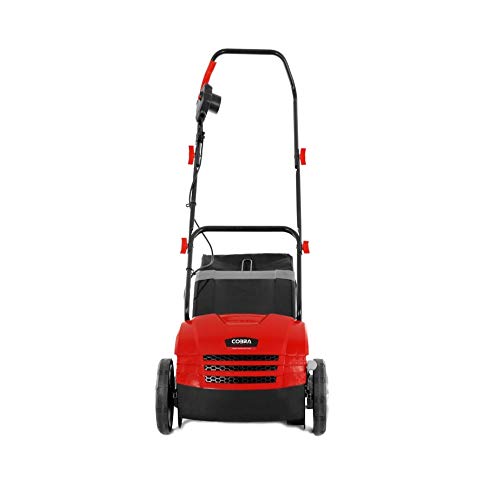How to scarify a lawn — experts share how to get a thicker and healthier lawn with this key garden task
Our step-by-step guide to using manual and motorised tools when scarifying
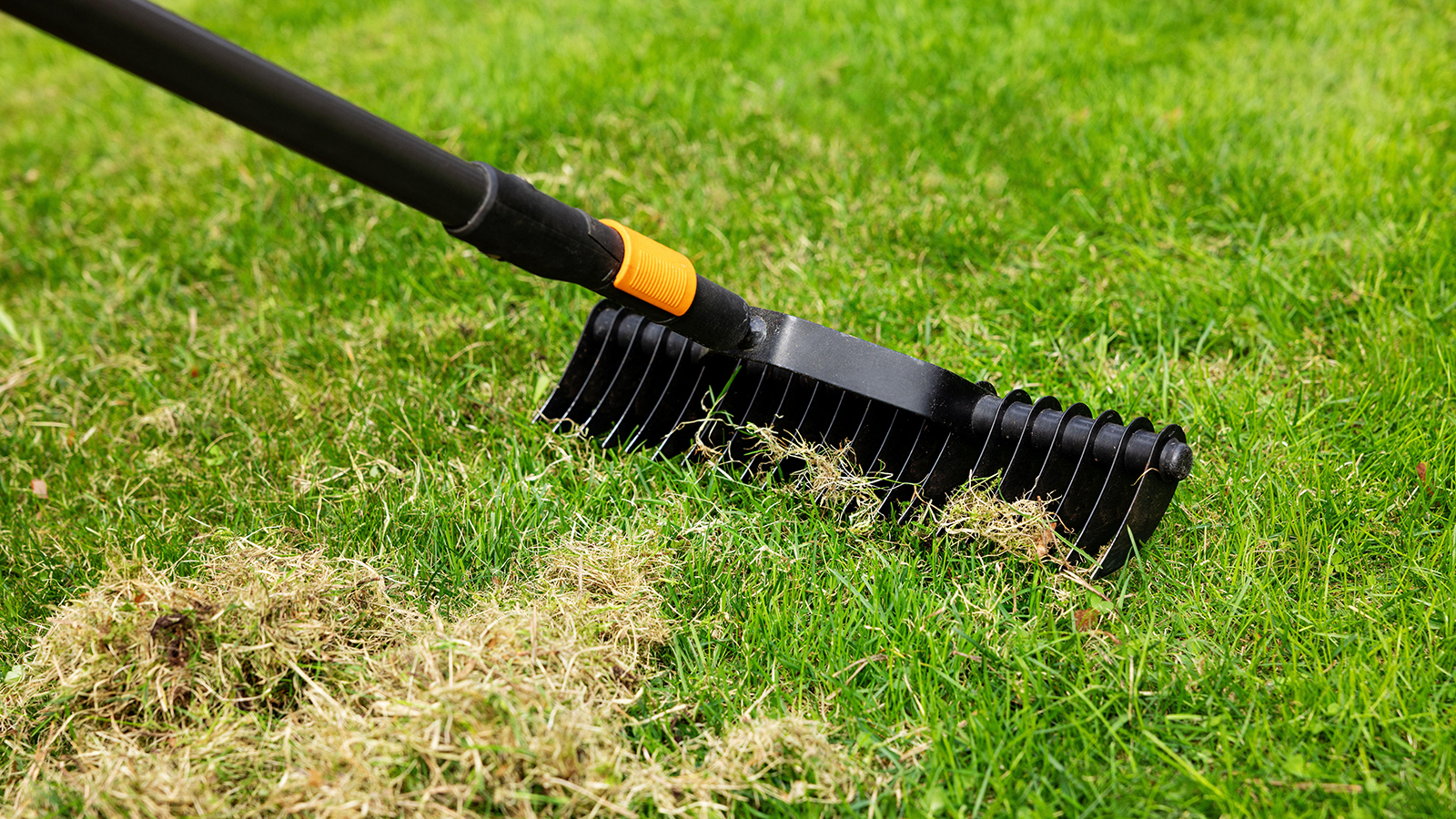
Knowing how to scarify a lawn is an essential part of maintaining a tidy and healthy garden and not a task that should be skipped over.
Scarifying involves removing dead grass, moss and thatch which, when allowed to build up, can prevent essential nutrients, oxygen and water from reaching the grassroots. Getting this garden landscaping task right encourages a healthier and thicker lawn, if you overdo it you can cause damage.
It can be done using a leaf rake or with a scarifier, a tool that uses rolling blades to trim and remove unhelpful organic matter. Be aware that scarifying your lawn can make it look bare initially, but this is part of the process of improving the long-term health of your lawn.
How to scarify a lawn for thicker, healthier grass
The best time to scarify a lawn is in spring or autumn, whilst the grass is still in active growth.
"Avoid scarifying when the grass is dormant or during periods of extreme heat or drought," advises garden expert at My Job Quote Fiona Jenkins.

A landscaper and gardening expert with over 25 years of experience in the industry. Currently she works for MyJobQuote as their resident expert on all things gardening.
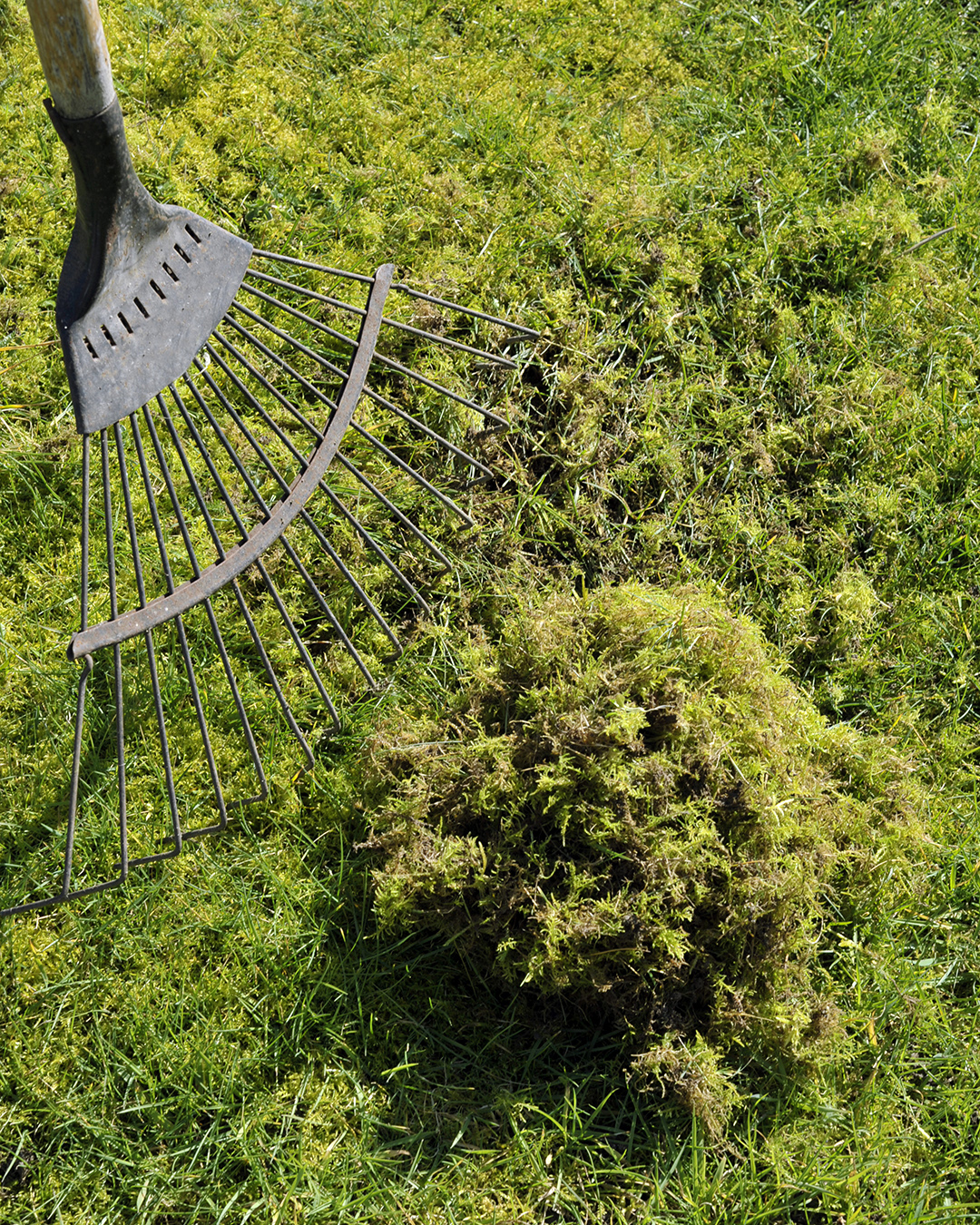
What you need to scarify a lawn
Depending on the scale of your task you can choose between a manual scarifier and a power tool. "A manual scarifier is a rake-like tool designed for small gardens. While they require more effort, they are effective for minor scarification tasks," explains Jane Dobbs, gardening expert at Allan's Gardeners.
"The electric scarifier is an efficient and easy way of mowing larger lawn ideas. The blades are often adjustable so that they can be used at different depths. You can speed up scarifying by applying moss killer a week before," she says.

Responsible for leading the gardening team at Allan's Gardeners, a landscaping and garden maintenance, business who do lawn care and installation. She has 10 years experience as a gardener.
Manual tools:
- Lawn scarifier
- Dethatcher
- Rake
Shop manual scarifier tools
Power tools:
- Power scarifier
- Power dethatcher
Shop scarifier power tools
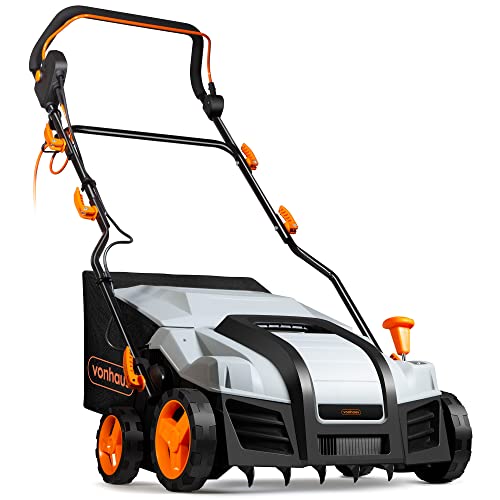
This two-in-one scarifier and rake will make short work of removing thatch from your lawn surface.
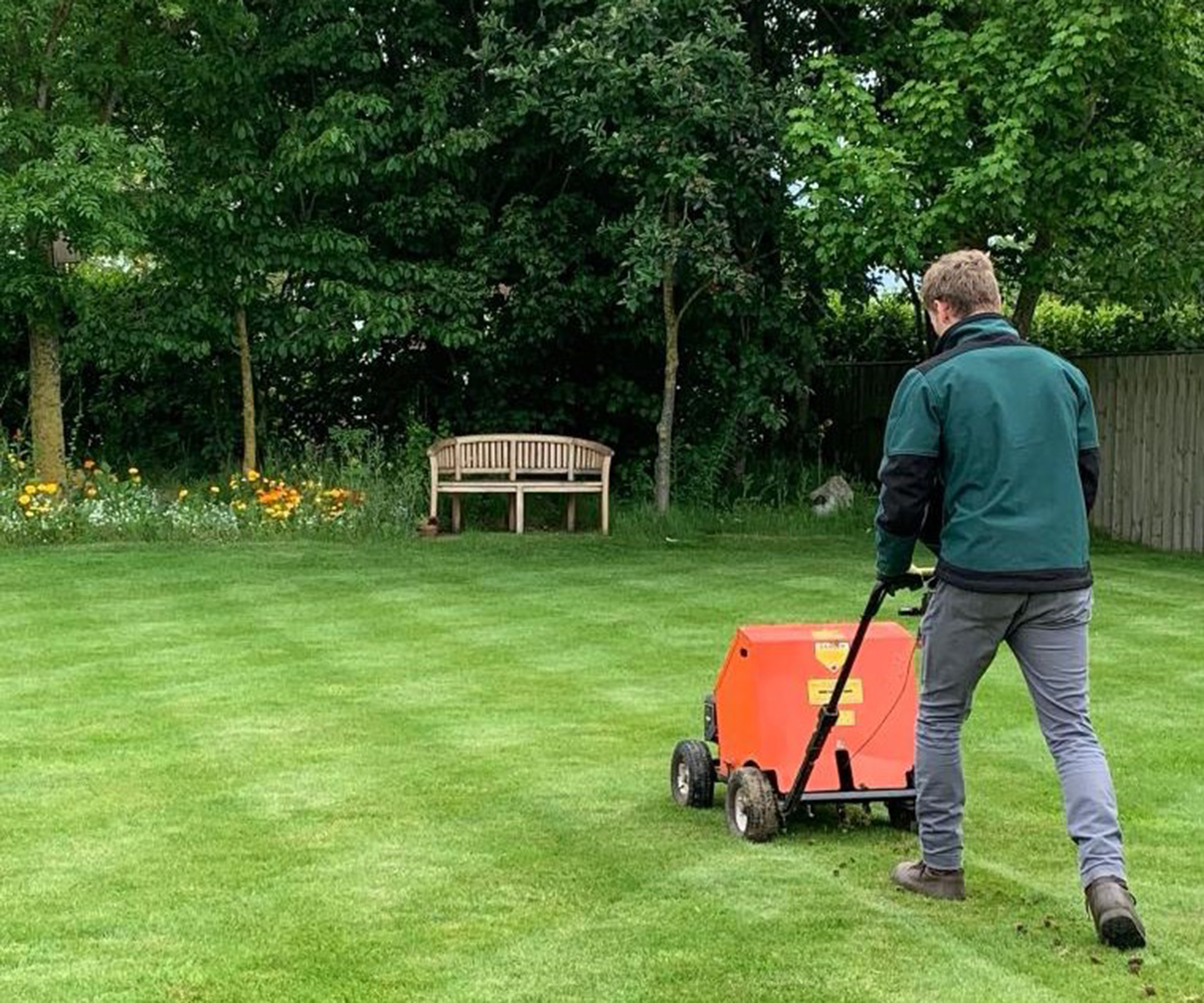
How to scarify a lawn: step by step
Don't scarify your lawn if you've just mown it. "Cutting the grass before scarifying can actually make it more difficult to remove the thatch, as the grass clippings can mix in with it and create a more dense layer," advises Fiona Jenkins.
Chris McIlroy, of seed and lawn experts The Grass People, recommends you always keep an eye on your weather app before you plan to scarify. "Never do it during a cold snap, as you could end up causing more harm than good," says Chris.
For any bare patches that form think about overseeding your lawn and fertilising it afterwards.
Fiona Jenkins outlines the step-by-step method below:
- Prepare the soil: Make sure the lawn is dry and free of debris like twigs or stones.
- Choose the right tool: A lawn scarifier or a rake with stiff tines are commonly used for manual scarification. You can also use a petrol or electric hand scarifier. These will scarify and remove thatch from your lawn without the physical effort of a leaf rake as well as helping to aerate the soil.
- Work in a pattern: Begin at one end of the lawn and work your way across. Apply moderate pressure, as you would a lawnmower, as you rake, ensuring you’re tearing through the thatch layer.
- Overlap the strokes: To ensure thorough coverage, overlap your strokes as you move across the lawn.
- Collect the debris: After scarifying, gather and remove the thatch, moss, and other debris from the lawn.
- Rake the lawn: Give your lawn a final raking to level it out and distribute the soil. Consider edging your lawn afterwards to tidy it up a bit.
FAQs
Should you cut grass before scarifying?
"No, you should not cut the grass before scarifying. The goal of scarifying is to remove thatch, a layer of dead and decaying organic matter that can build up on your lawn," says gardening expert Fiona Jenkins.
"Scarifying is a deep treatment that involves penetrating the soil to remove thatch and improve aeration. Cutting the grass before scarifying can interfere with this process," she adds.
Chris Mcilroy, of seed and lawn expert The Grass People, advises you to mow your lawn a week before scarifying it. He said: “This will help to prepare your grass and will also help to remove any excess grass length and chop up any thatch patches, leaving your scarifying job much easier.”
He also recommends using a moss killer a week before you scarify. This will help to kill off the moss and it will make your job much easier when it comes to removing it.
Is it worth buying a scarifier?
There are several reasons why you may find it worthwhile investing in a scarifier. "Scarifying helps to break up compacted soil, allowing air to penetrate deeper into the root zone. This promotes healthier root growth and better nutrient absorption," advises garden expert Fiona Jenkins.
"Thatch is a layer of dead and decaying organic matter that can build up over time. Scarifying helps to remove this layer, preventing it from suffocating the grass. Moss often thrives in damp, shaded areas where there is poor air circulation."
"Scarifying can help to disrupt these conditions, making it less hospitable for moss in lawns growing. By improving aeration and reducing thatch, scarifying can help your lawn absorb nutrients more effectively. Over time, regular scarifying can result in a thicker, healthier, and more vibrant lawn," advises Fiona.
How to scarify a lawn with a powered scarifier?
If you have a large area to cover, Chris recommends using an automated scarifier as this will speed up this process and save you a lot of effort.
Chris adds: “You can hire or buy one if you have a large area to cover. This method will remove a lot more material and be useful if you want to overseed afterwards. This may result in seeing soil patches where the moss has been removed - but that is what you need to overseed, so don’t panic.”
The technique when scarifying is actually very similar to the technique used for a leaf rake. You go over the lawn in one direction, before going over it a second time at a different angle. You then need to collect up all the thatch that has been pulled out afterwards and ideally seed more grass.
When is a leaf rake better to use when scarifying?
Guy Jenkins, consumer manager at Johnsons Lawn Seed, points out that a manual scarifier such as a rake doesn’t use petrol or electricity so is good for the environment and your bank balance. He says rakes are ideal for scarifying smaller gardens and their size means they are ideal for small areas near hedges, trees, and shade which are more prone to moss.
However, he adds: "If you have a large garden a rake is quite time-consuming and requires more exertion than a machine scarifier which has sharp tines that rotate at high speed and vertically cuts turf."
Growth of weeds in lawns can be prominent during the summer months. Take a look at our guide on how to get rid of weeds in lawns.
Get the Homebuilding & Renovating Newsletter
Bring your dream home to life with expert advice, how to guides and design inspiration. Sign up for our newsletter and get two free tickets to a Homebuilding & Renovating Show near you.

Teresa was part of a team that launched Easy Gardens in 2018 and worked as the Editor on this magazine. She has extensive experience writing and editing content on gardens and landscaping on brands such as Homes & Gardens, Country Homes & Interiors and Living Etc magazine. She has developed close working relationships with top landscape architects and leading industry experts, and has been exposed to an array of rich content and expertise.
In 2020 Teresa bought her first home. She and her partner worked alongside architects and builders to transform the downstairs area of her two bedroom Victorian house in north London into a usable space for her family. Along the way she learned the stresses, woes and joys of home renovation, and is now looking to her next project, landscaping the back garden.



